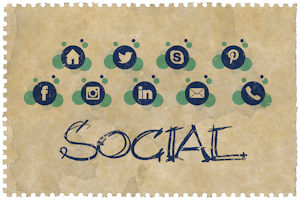- NEW
- 4 minute read
- Digital Marketing
- SEO
- Websites
The Types of Photos You Must Include on Your Tour or Activity Site
Intermediate
Spark is headed to the Big Easy! Join us in New Orleans October 13-15. Registration opens soon!

Social media plays a big marketing role for any business, with 3.196 billion active social media users in the world today, and it has quite an impact on the travel and tourism industry. Today, 30% of travelers in the U.S. use social media to find trip inspiration (Martech), and in a 2019 study, 86% of people said they become interested in a specific location after seeing user-generated content on social media (Stackla). In another study, 50% of travel companies surveyed reported that direct bookings were generated from social media, demonstrating the importance of social media for tour and activity operators.
As a tour operator, there are many reasons why you should use social media for marketing. For starters, it gives you a chance to reach prospects that might not know about your tours otherwise. Regular posting allows you to engage with your customers so that you stay top of mind. And finally, it helps direct followers to your website, where they can learn more about what you offer or make a booking.
This guide will walk you through how social media has grown and the major trends that will help you market your business on social media platforms in 2020.
Social media has continued to grow year after year, becoming a bigger part of how we interact with businesses. In a Pew Research Center study, they found that Facebook and YouTube are the most widely used online platforms among adults in the U.S., with 69% using Facebook and 73% using YouTube, followed by Instagram at 37%. Business owners can’t afford to ignore these platforms where potential customers are already spending so much of their time.
Before jumping into what’s coming in the following year, let’s go over some current social media trends that will continue to be relevant in 2020:
Did you know YouTube is now the second-largest search engine in the world? This reflects the fact that video is the most-consumed type of content online today. Whether live or edited, video has become hugely popular on social media, and in the next year, it will be solidified as the primary type of content produced online. According to B2C, 72% of consumers prefer to use a video to learn about a product or service, and 80% of the content we consume online will soon be video-based.
Video is versatile and lends itself to short or long-form content that can serve a variety of purposes. Businesses use social media to post short promotional videos to tease a new product or service, in-depth video tutorials, or informational content. Video is also easy to share across platforms, helping your content become widespread.
 To make the most of your social media strategy in 2020, think about creative ways to incorporate video to show off what your business has to offer. Here are some ideas to get you started:
To make the most of your social media strategy in 2020, think about creative ways to incorporate video to show off what your business has to offer. Here are some ideas to get you started:
There is a lot you can do with video, and the great thing about social media is that you can learn what works best by trying out new things and measuring how your audience engages with each new post.
Not to be confused with virtual reality, augmented reality projects virtual augmentations onto the real world (think of Snapchat filters like the dog filter, 3D Bitmoji filter, or anything camera-feature related). This popular social media feature is widely used on Facebook and Instagram, and as new features are developed, it will soon go beyond adding fun filters to photos. For example, the makeup company Sephora uses AR to allow users to virtually try on different products to see how they look on their face, enhancing the buying experience.
As AR continues to grow, it will become a larger part of the social media landscape. Businesses can use it to increase engagement at live streaming events, enhance videos, increase brand awareness, and more.
In the coming year, get creative about using AR on your Instagram and Facebook stories and live streaming events to get a feel for how this technology can fit into your business’ social media presence.
People are spending more time on their smartphones than watching television or reading the newspaper, so it’s no surprise that 50% of internet users surveyed by Forbes said that they hear about the latest news via social media before ever hearing about it on a news station.
Due to the quick spread of information on social media platforms, it’s common to find out about breaking news stories by seeing them trending on Twitter. Of course, not all the information that gets spread is from a reliable news source, so it’s important to be discerning when deciding what you want to share on social media.

To use this trend to your advantage, stay on top of news about your city and your industry on social media, and share any stories that would be of interest to your customer base.
If your city is featured on a list of great places to visit, for example, that’s a great opportunity to share the hype and even tell your customers about the tours or activities you provide that show off this awesome area.
The availability of information at our fingertips has made us expect instant answers any time we have a question, so when we send a question to a business via social media, we want to hear back from them right away. Auto-responder chatbots allow business owners to spend less time addressing questions and give customers the instant answers they need.
Chatbots are expected to continue to grow in 2020, and they can help businesses cut costs, save time, and convert potential customers by giving them quick answers to common questions like business hours, prices, and more.
If you spend a lot of time answering questions on Facebook or Instagram, or if you tend to leave your visitors waiting for a long time for an answer, look into how you can incorporate chatbots to help save you time and convert visitors into customers!
Social media allows people with similar interests to find each other and connect. Social media groups make it easy to form communities around certain topics, and businesses can take advantage of this to connect with people who are expressly interested in what they have to offer. These communities can range in size and scope, and there’s almost certainly a group out there for any topic you can think of (and if there isn’t, it’s easy to create one!).

Make the most of the social media communities related to your area and your industry by joining relevant groups aligned with the services you offer. For example, if you provide food tours in Denver, find and join Denver foodie groups on Facebook.
 Pro tip: Don’t bombard these groups with advertising for your business. Instead, engage in authentic conversations about the topics you’re interested in and learn about your target audience by seeing what they post about and reading their comments.
Pro tip: Don’t bombard these groups with advertising for your business. Instead, engage in authentic conversations about the topics you’re interested in and learn about your target audience by seeing what they post about and reading their comments.
Especially among young adults, influencer marketing is growing as an effective way to reach your target audience and market your products to them. The reason influencer marketing works so well is that influencers create a bond of trust with their followers. According to a recent study, 62% of 18-24-year-olds agree influencers are honest about their beliefs and opinions (Marketing Charts).

MarketingCharts.com
This level of trust makes social media audiences more likely to try out the products and services influencers recommend. Among 18-24-year-olds, 41% are motivated to try something recommended by influencers, and among 25-34-year-olds, 48% are motivated to do so. Instagram is the biggest platform when it comes to influencer marketing due to its visual nature.
If this 18-34 age group is your target audience, follow influencers related to your industry, such as travel bloggers, and think about opportunities to work with influencers to promote your business. Depending on the number of followers they have and how much it costs to have them promote your product, influencer marketing has the potential to help you reach the perfect audience for your tours or activities.
Social media is continually growing and changing in response to how users interact with each platform, so it’s important for businesses to stay on top of new trends and continue to innovate and test out new ways to engage followers. For more social media tips and tricks, explore our other social media guides!